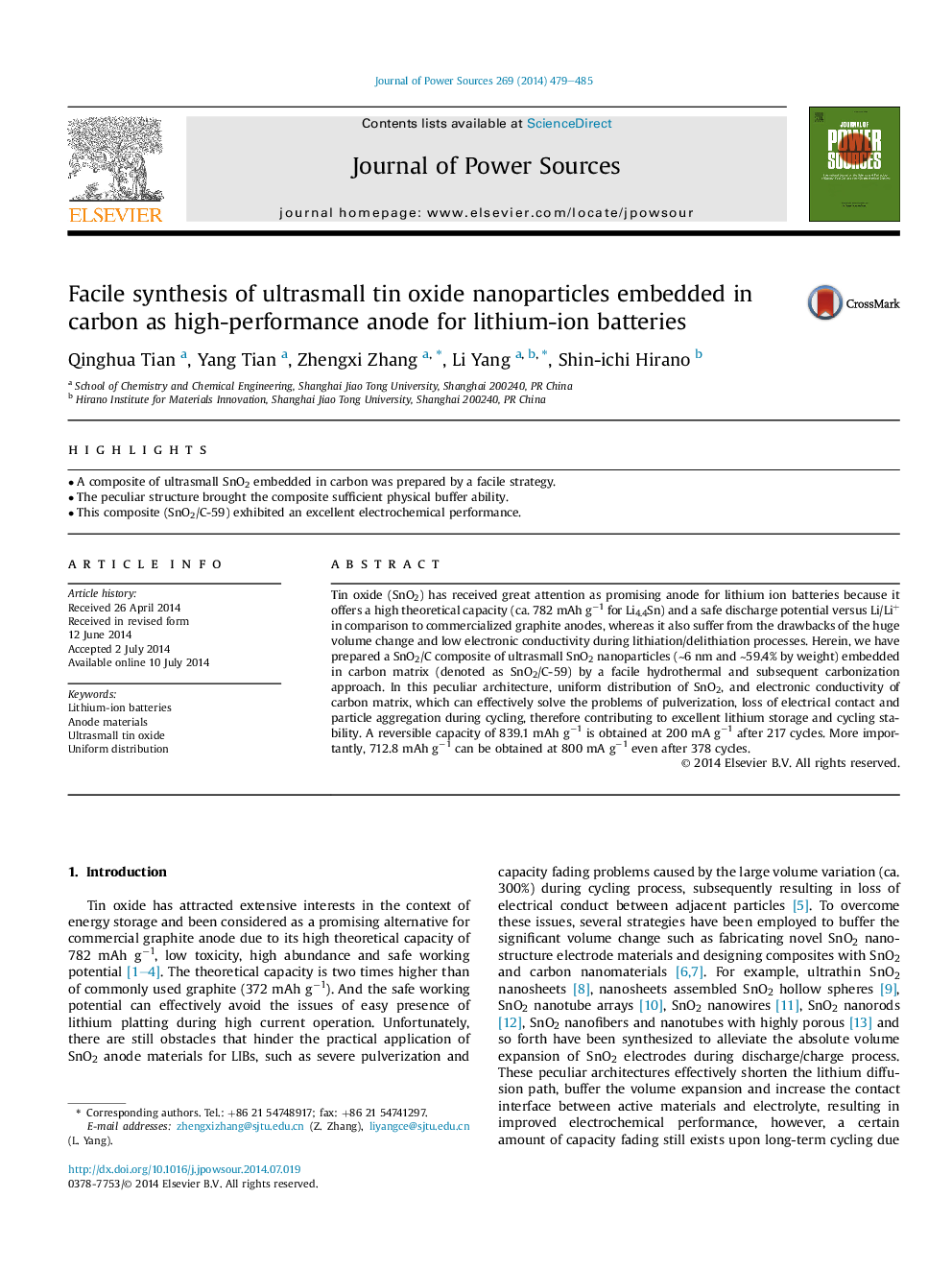| Article ID | Journal | Published Year | Pages | File Type |
|---|---|---|---|---|
| 7736199 | Journal of Power Sources | 2014 | 7 Pages |
Abstract
Tin oxide (SnO2) has received great attention as promising anode for lithium ion batteries because it offers a high theoretical capacity (ca. 782 mAh gâ1 for Li4.4Sn) and a safe discharge potential versus Li/Li+ in comparison to commercialized graphite anodes, whereas it also suffer from the drawbacks of the huge volume change and low electronic conductivity during lithiation/delithiation processes. Herein, we have prepared a SnO2/C composite of ultrasmall SnO2 nanoparticles (â¼6 nm and â¼59.4% by weight) embedded in carbon matrix (denoted as SnO2/C-59) by a facile hydrothermal and subsequent carbonization approach. In this peculiar architecture, uniform distribution of SnO2, and electronic conductivity of carbon matrix, which can effectively solve the problems of pulverization, loss of electrical contact and particle aggregation during cycling, therefore contributing to excellent lithium storage and cycling stability. A reversible capacity of 839.1 mAh gâ1 is obtained at 200 mA gâ1 after 217 cycles. More importantly, 712.8 mAh gâ1 can be obtained at 800 mA gâ1 even after 378 cycles.
Related Topics
Physical Sciences and Engineering
Chemistry
Electrochemistry
Authors
Qinghua Tian, Yang Tian, Zhengxi Zhang, Li Yang, Shin-ichi Hirano,
